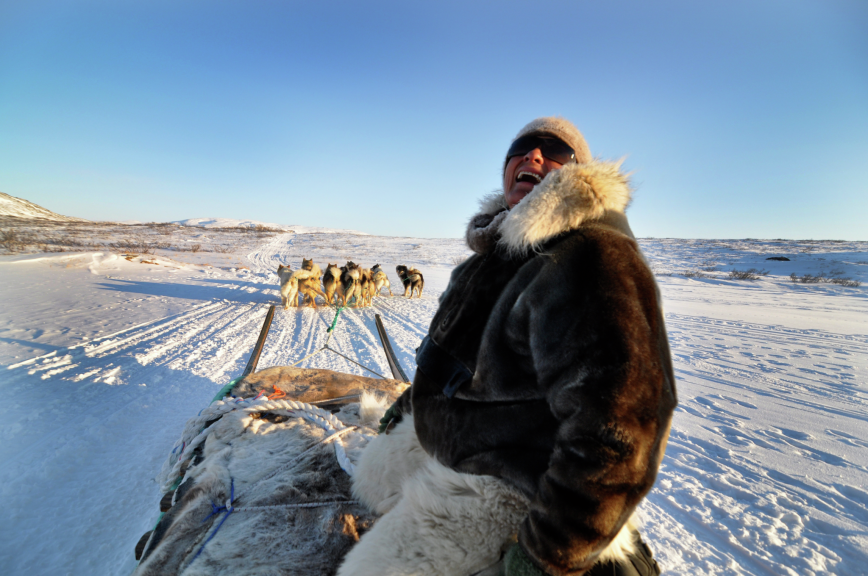Life in Greenland

With Extreme E’s Arctic X Prix in Kangerlussuaq, Greenland just around the corner, the series caught up with locals Johanne Bech and Rakel Olsen about their way of life in the Arctic.
Greenlandic life is a mystery to many as it is such a remote island, but for its 56,000 inhabitants occupying 2.1 million km2 of land - 80 per cent of which is ice - the country offers peace, tranquillity and a chance to be at one with nature making it popular for those seeking a break from the hustle and bustle of city life.
We caught up firstly with Johanne Bech, who coordinates dog mushers in Kangerlussuaq servicing the tourism industry. Johanne was born and raised in Greenland and now spends the latter part of the year living in Sisimiut, in the centre of Greenland, with her husband and during January to April is based in Kangerlussuaq, where she organisers mushers for dog sledding trips, something she has done for over twenty years. Outside of work she enjoys hunting, fishing and also making her own clothes.
When asked about the key elements of Greenlandic culture she said, “clean water and clean nature! Everything we eat is clean as what we hunt/catch isn’t tainted by pollution. Hunting is still such a huge part of our lives and something that keeps us in touch with our ancestors. I continue to use animal hides for the clothes I use when hunting and dog sledding. It ensures that myself and my passengers aren’t cold.”
Johanne speaks Greenlandic, Danish and a little English and explains, “an important part of our culture is also that we still keep and continue to practice our language Kalallisut.”
Next up is Rakel Olsen who together with her husband, Amassa Olsen, sell what they catch to various shops in the community. The pair have lived in Kangerlussuaq for the past eight years but were raised in various towns across Greenland since birth.
Amassa has been a hunter for thirty years, with Rakel being a hunter for six years, and an official Greenland guide for seven years.
When Rakel isn’t working she finds time to relax and enjoy the quietness Greenland has to offer as well tanning her own hides and spinning her own musk ox wool.
She describes her culture as, “living together with nature” and goes onto say, “we still hunt and eat what nature provides us.” Music is also important to Rakel and she enjoys the strong song culture in Greenland, but her favourite thing about the island is the peace, quiet and fresh air.
We asked both if climate change has affected their day-to-day lives and sadly both nod in agreement. Johanne says, “The weather changes much quicker than it used to and we have to leave Kangerlussuaq earlier than usual because it gets warmer. The water level isn’t the same as it was once, and therefore it doesn’t freeze over at its usual places and we have to find alternative routes.” Rakel adds, “I’ve started wearing raincoats! It has started to rain a lot in summertime. During winters, from approximately October to March it would usually be minus 40/50 degrees Celsius, but now, it’s only minus 20. The seasons have definitely changed. However, an upside to this is that we’ve started harvesting our own fruit and vegetables in the summer.”
And on the subject of food, we ask, what is a usual Greenlandic diet, and both say whatever they catch from nature such as caribou, musk ox, fish, hares and grouse. Johanne says, “I make steaks and minced meat from the caribou and musk ox and I also eat crowberries, for example, my breakfast is often a dish of crowberries and yogurt which is delicious.”
Stay tuned for more insight and facts about Greenland as Extreme E’s Arctic X Prix draws closer.